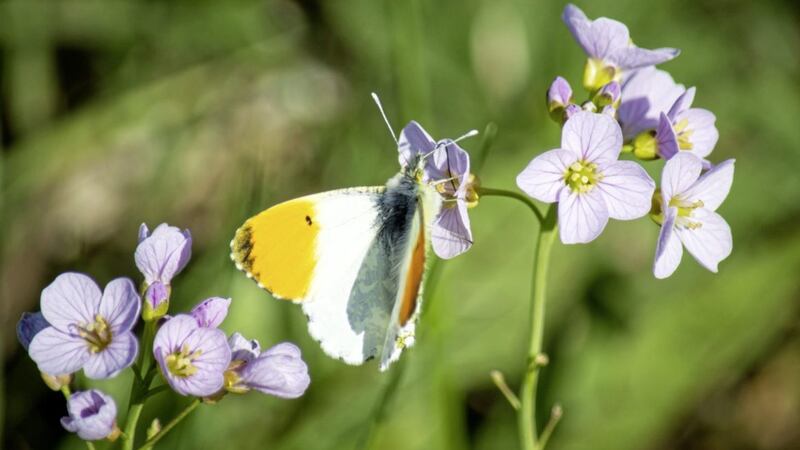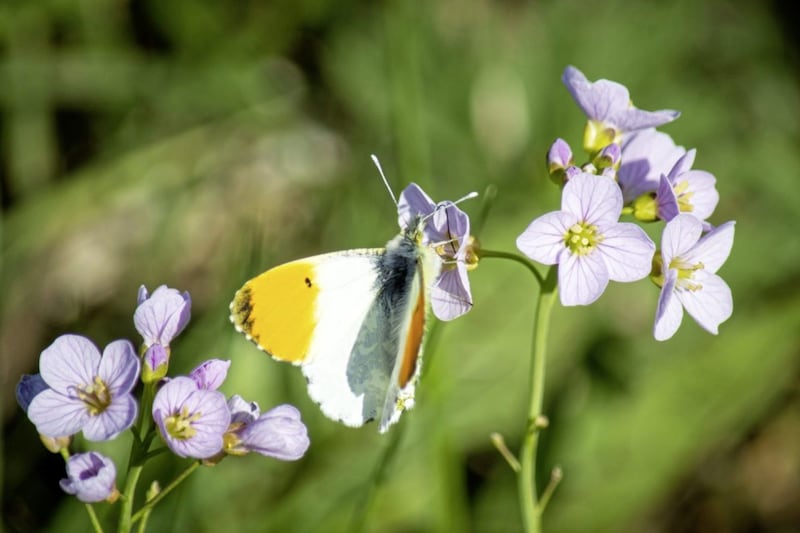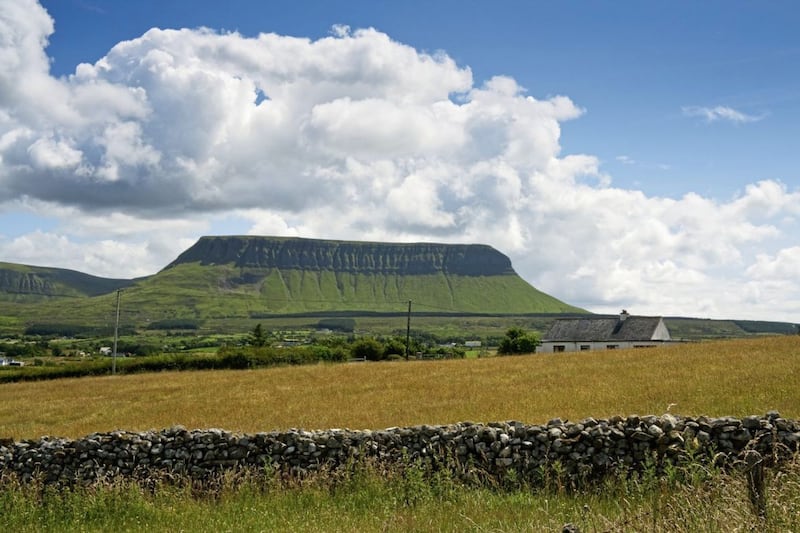ALTHOUGH spring has been stuttering in recent weeks, the natural world is pressing ahead with new growth, renewal and rebirth. The dandelion, marigold primrose and gorse are all showing off their yellow hues, our dawn skies are full of music and our hedgerows are greening once again.
Also springing up with little fuss are carpets of cuckooflower or 'lady's smock', the pretty perennial of damp meadows, ditches, riverbanks, and roadside verges. Its pale lilac flowers, resting on slender stems, will bloom throughout May, coinciding with the arrival of the first cuckoo.
Although it looks extremely delicate, it is in fact quite tough, well able to withstand strong winds without its stems breaking. Occasionally the flowers appear white, something Shakespeare notes in his comedy, Love’s Labour’s Lost when he writes of how, "lady smocks all silver-white/Do paint the meadows with delight".
Cardamine pratensis, (pratensis is Latin for meadow) is a larval foodplant of the orange-tip butterfly, which will soon be seen dancing along hedges and grasses in search of the four petalled flower. When a suitable plant is found, the female lays a single, spindle-shaped egg on the underside of flower buds. The eggs will turn a deep orange after a few days before the emerging caterpillars begin to feed on the developing seed pods.
Not surprisingly, the cuckooflower has its own catalogue of lore and names. 'Lady's smock' probably refers to the pale, pinkish and slightly cupped nature of the petals, resembling the outer garment which ladies might have worn to protect their clothing while working. Also called ‘milkmaids’, the link with maids and their smocks has given the flower a romantic association. Following the arrival of Christianity in Ireland and Europe, this feminine connection was transferred to our lady, Mary, leading to a host of other names such as ‘lady’s glove’ and ‘my lady’s smock’ or ‘Léine Mhuire’ in Irish, Mary’s dress/fine shirt.
Much superstition surrounds the flower, with stories of how a thunderstorm will break out if anyone picks it and how in parts of England, picking it would incur the punishment of a snake bite from the poisonous adder.
In Ireland it was believed that an animal or person born on May Day required their eyes to be washed and cleansed with the juice of cuckooflowers. The young edible leaves of the cuckooflower have a peppery taste, making them a substitute for cress in sandwiches and salads.
It has also been used for medicinal purposes in Ireland through the centuries. Moloney, in his Irish Ethno-botany and the Evolution of Medicine in Ireland (1919), writes: "The flowering tops were used as an antispasmodic remedy in Saint Vitus dance, falling sickness, etc", (Sydenham's chorea), an acute neurological disorder which can appear several months after a streptococcal infection.
In a survey of the plants and herbs of the Dingle Peninsula in Co Kerry, and their uses, Uí Chonchubhair, also recorded its use to treat scurvy, kidney stones and epilepsy. (Flóra Chorcha Dhuibhne; Aspects of the Flora of Corca Dhuibhne, 1995).
In some parts of Ireland, the flower was given the name ‘clappede-pouch’ after the pouch, extended on a long pole with clappers or bells, used to receive alms by a leper at a crossroads. (Clyne, Douglas, Gaelic Names for Flowers and Plants, 1989.)
The earlier words quoted from Shakespeare on the appearance of the cuckooflower are followed with:
The cuckoo then on every tree?Mocks married men, for thus sings he:?Cuckoo;?Cuckoo, cuckoo: O, word of fear,?Unpleasing to a married ear!
Although I haven’t heard him yet, I’m reliably informed he too has arrived.




